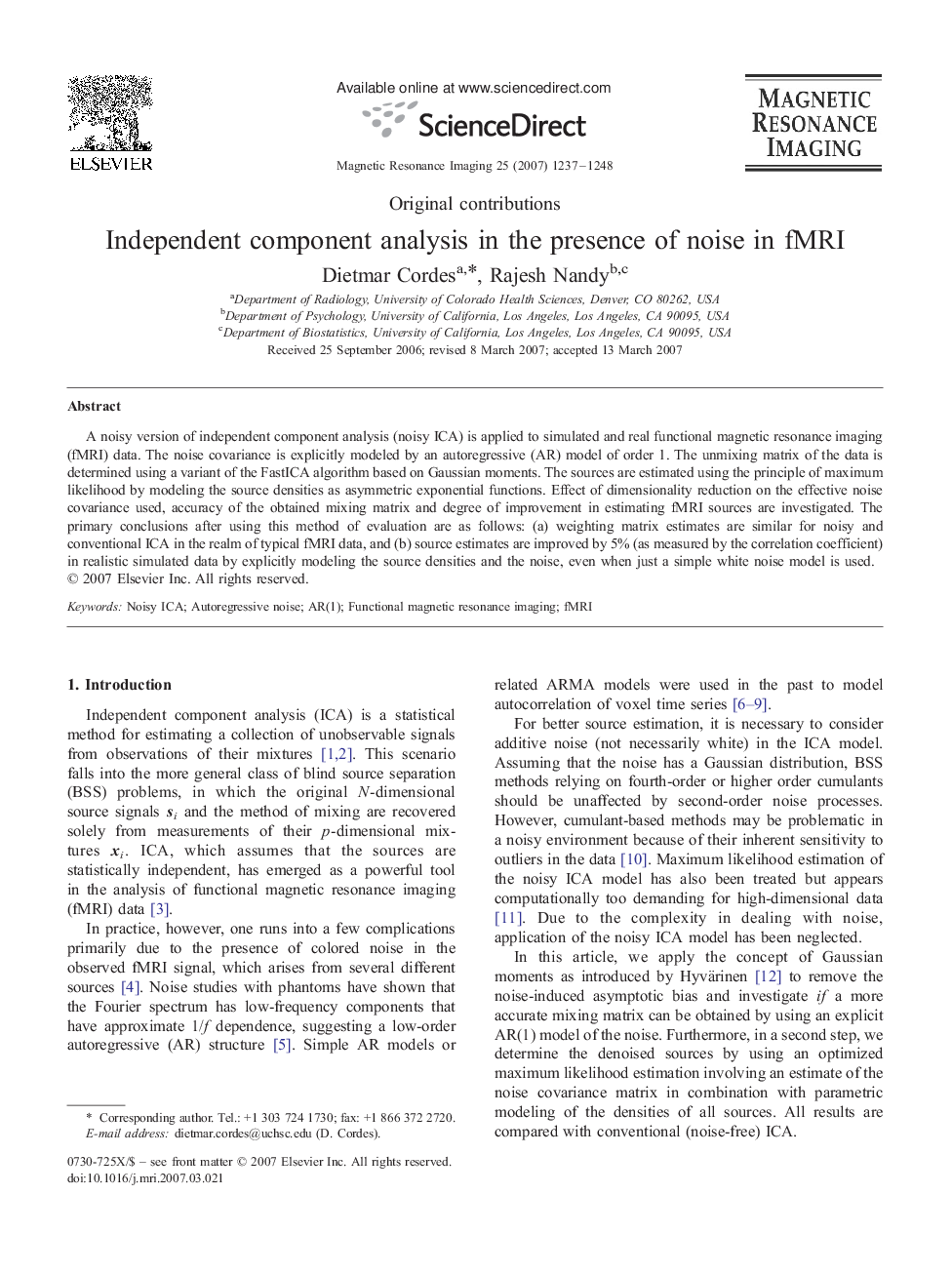| Article ID | Journal | Published Year | Pages | File Type |
|---|---|---|---|---|
| 1807732 | Magnetic Resonance Imaging | 2007 | 12 Pages |
A noisy version of independent component analysis (noisy ICA) is applied to simulated and real functional magnetic resonance imaging (fMRI) data. The noise covariance is explicitly modeled by an autoregressive (AR) model of order 1. The unmixing matrix of the data is determined using a variant of the FastICA algorithm based on Gaussian moments. The sources are estimated using the principle of maximum likelihood by modeling the source densities as asymmetric exponential functions. Effect of dimensionality reduction on the effective noise covariance used, accuracy of the obtained mixing matrix and degree of improvement in estimating fMRI sources are investigated. The primary conclusions after using this method of evaluation are as follows: (a) weighting matrix estimates are similar for noisy and conventional ICA in the realm of typical fMRI data, and (b) source estimates are improved by 5% (as measured by the correlation coefficient) in realistic simulated data by explicitly modeling the source densities and the noise, even when just a simple white noise model is used.
